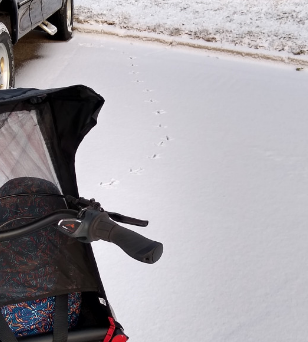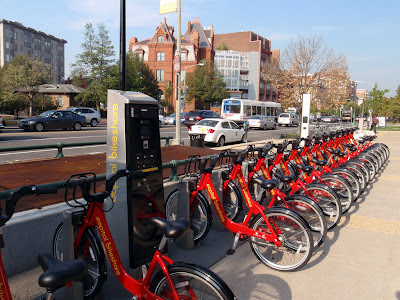Some visitors to this blog may be wondering what is meant by “complete streets,” when the majority of coverage has been about bicycles. Part of the cycle-centricity stems from recent events: the idea of bikeshare in Grand Forks is a pretty big deal around here, so it’s interesting to write about. Another part of the bicycling focus comes from my personal experiences: I’ve been bicycle commuting in Grand Forks for almost six and a half years, and commuting year-round for about five of those years. My discussions with people so far this spring have been focused on making it easier for people to ride because that’s what I talk to my friends about.
It’s not just about bicycles, however. We can all recognize that, for many people, bicycle commuting is not an option due to work scheduling, transporting more than a couple kids around at once, needing to move large items, injury or illness, disability, or a combination of these and many other factors. We have different mode of transportation because they are all good for different things, and this is where the complete streets model comes in. A good overview comes from the National Complete Streets Coaliton:
Complete Streets are streets for everyone. They are designed and operated to enable safe access for all users. Pedestrians, bicyclists, motorists and transit riders of all ages and abilities must be able to safely move along and across a complete street. Complete Streets make it easy to cross the street, walk to shops, and bicycle to work. They allow buses to run on time and make it safe for people to walk to and from train stations.
Creating complete streets means transportation agencies must change their approach to community roads.By adopting a Complete Streets policy, communities direct their transportation planners and engineers to routinely design and operate the entire right of way to enable safe access for all users, regardless of age, ability, or mode of transportation. This means that every transportation project will make the street network better and safer for drivers, transit users, pedestrians, and bicyclists – making your town a better place to live.
Complete streets supporters aren’t against any particular mode of transportation, but they are anti-bad-design when it comes to public infrastructure. “Bad design” refers (as shown above) to transportation that is automobile-centric, a condition shared by much of the country but not necessarily most of the world. We aren’t out to tell you what choices to make, but we’re here to tell you that you can have choices, and those choices should be integrated into the public space.
Some examples of non-complete streets in Grand Forks include
-
The South Washington Street underpass, the deteriorating sidewalks of which make it nigh impassible for the elderly during the summer. The lack of snow removal on those same sidewalks closes it off completely during the winter.
-
The DeMers overpass, which has no sidewalks at all. There are only limited opportunities to cross the train tracks in town, and this one, near downtown, excludes anyone not in a motor vehicle.
-
Both ends of the University Avenue bike lane, which dump a rider onto the sidewalk after crossing 42nd Street or Columbia Road.
-
The 42nd Street railroad crossing, which backs up traffic, causing pedestrians and cyclists (also stopped by the train) to breathe the same exhaust that the drivers are stuck in.
There must be a reason for this, of course. Altruism is not entirely at play here, and many complete streets advocates just want a place for themselves on the road where they won’t feel like they are going to die. Additionally, however, there are a number of societal benefits from giving people choices when it comes to transportation, including (but not limited to)
-
Congestion reduction: more options means fitting more people in the road. If it’s sunny, ride your bicycle. If it’s raining, take the bus. If you’re helping your grandmother move, drive your truck.
-
Economic growth: the more people you can get to your door, the more money you can make. Why disregard the part of the community that rides a bicycle or walks? Pedestrian malls formed by closing streets to vehicles often become commercial hotspots.
-
Healthier society: by allowing people to walk or ride, we’re making it easier for people to get the minimum amount of recommended daily physical activity. For employers, healthier employees means fewer sick days.
-
Safety: by adding accessibility, drivers are required to pay greater attention, reduce speed, and lower the number of crashes.
-
Fiscal planning: by including complete streets designs early on new projects, money can be saved on making those same improvements later.
If these are ideas you can get behind, for yourself or for someone else, please do some more reading and start thinking about what we can do. Of cities in North Dakota, only Fargo has at least some degree of policy relating to complete streets; with a little work, Grand Forks could be the first to design and implement a complete streets policy to make sure everyone is able to make the best transportation choices they can.


